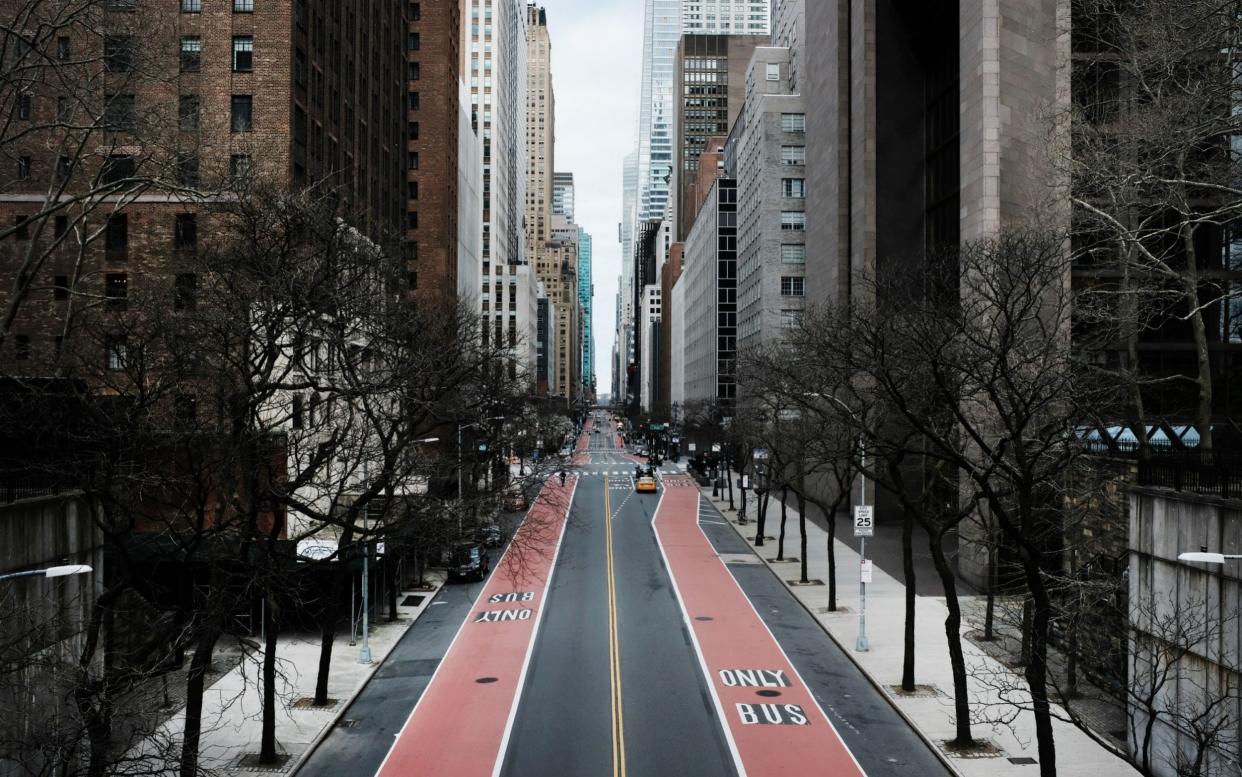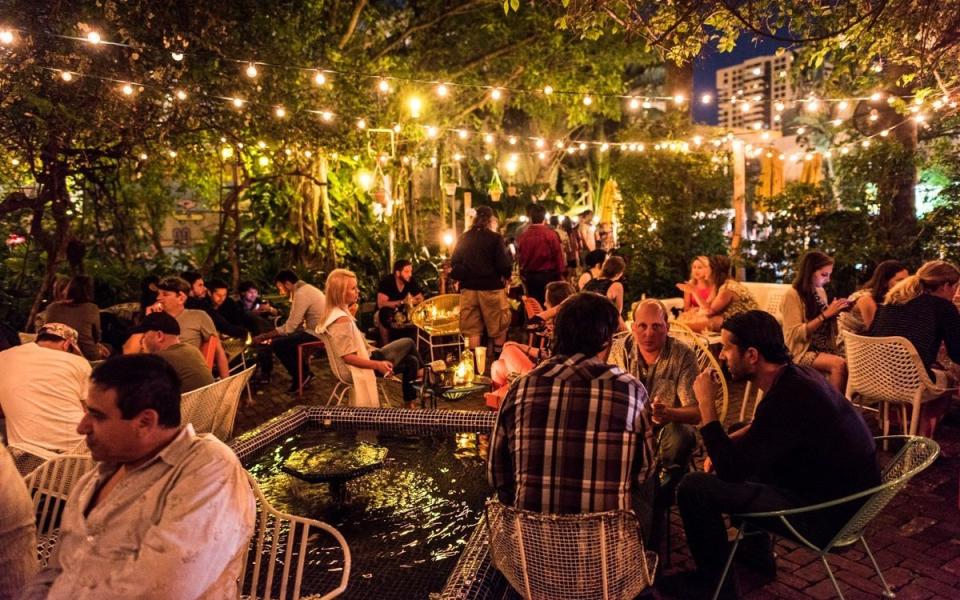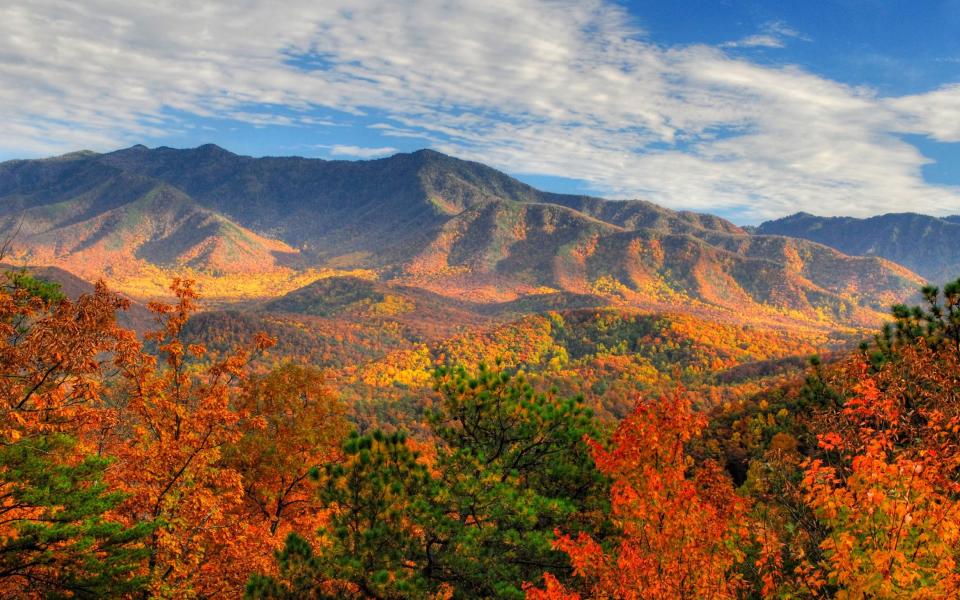From New York City to Nashville: Americans fed up of cramped cities flee in droves during pandemic

After the 1918 Spanish flu pandemic ripped through America's cities a little known beach town in Florida called Miami saw its population quintuple in seven years to 150,000 as people fled the metropolises.
A century later, a similar phenomenon is underway, sparked by Covid-19, combined with the exponential rise of teleworking, and the crippling unaffordability of housing in city centres.
According to data from the US Postal Service, New York City lost a staggering 110,978 people last year, up 487 per cent from the same period in 2019. Chicago lost 31,347, San Francisco, 27,187, and Los Angeles 26,438.
Many of them went to Florida and Texas, others to previously unfashionable places like Boise, Idaho.
Some economists believe the pandemic has turbocharged what was an already inevitable decline for so-called "superstar cities" - specifically New York and San Francisco - which have now peaked as hubs for population and jobs.
"It was already happening but the Covid [teleworking] technology revolution has put that move on steroids," said Susan Wachter, Professor of Finance at The Wharton School.
"It's massively shifted. The speed has been stunning. Pre-covid we were seeing a decrease in population in superstar cities, the least affordable cities. They were victims of their own success. But it was slow.
"You could move out, but you would lose that job. Now you can commute from Texas to San Francisco by way of Zoom."
New Yorkers leave ghost town behind
Second and third tier cities like Miami, Austin, Nashville, Boise and Boulder are now set to boom.
"It's just beginning. It will be a decade for this to play out," Said Professor Wachter. "But it's going to be a new era of distributed urbanisation. These cities will become rivals and grow in ways we have never seen before. It'll be exciting for them and the United States."
Resilient New Yorkers had withstood the 1980s crack epidemic, 9/11, and the 2008 financial crisis. But the pandemic appears to have been the straw that broke the camel's back.
Upscale Manhattan neighbourhoods have become virtual ghost towns. Hungry rats, which usually feast on tossed restaurant food or rubbish, have reportedly turned to cannibalism in the Upper West Side. Normally cramped streets lie empty and burglaries have soared. Property prices have tumbled up to 20 per cent.
Hannah McFarlane, who lives in Soho, said her building has 25 apartments but only six occupants remain.
"The apartment block was always noisy and bustling," she said. "It’s odd to say, but I kind of miss it.”
Among the tens of thousands who have fled New York was Abigail Jaffe, 28, who works in public relations. She "took a leap of faith" and acted on a long held desire to go live in Austin, Texas after her employer adopted remote working.
In New York she had shared a flat with a friend, but for less money she got a mortgage on a house in Austin.
"I got a dog, I got a car, I'm buying a house. My space has exponentially increased," she said. "I miss the energy that comes from being with colleagues in New York but I love a lot of things about Texas. I love country music. It was just claustrophobic in New York during the pandemic. There was nowhere to go, it was almost apocalyptic."

Margaret Wurth, 35, a senior researcher at a human rights organisation, and her partner, left New York and moved inland to a three-bedroom house in a village.
She said: "We were both trying to work from this tiny 500 sq ft apartment, with no dining table even, just thinking to ourselves ‘why are we doing this?’. I cried the day we moved. New Yorkers are proud and are supposed to be able to stick anything out."
But on her first weekend exploring the great outdoors she had a “quasi-religious” experience, and has no plans to go back.
Return of the suburbs and the Sunshine State
For New York's bankers the idea of a "Wall Street South" in Florida is growing ever more real.
Ray McGuire, a Democrat former Citigroup executive running for mayor of New York, has pleaded with financial businesses not to leave but Goldman Sachs is said to be considering moving its asset-management division there.
A recent study showed at least 20 per cent of Wall Street firms are also thinking along similar lines.
Miami's Republican mayor, Francis Suarez, is aggressively trying to lure them to the city. Big financial names like Elliott Management, Icahn Enterprises, Citadel and Blackstone are already setting up shop in the sunshine.
Kevin Couper, 34, helped set up a satellite office for his wealth management consultancy Wealthspire in Boca Raton, southern Florida, over the summer.
“It was night and day moving to Florida - no state income taxes, lower cost of living, better weather,” he said. "Only time will tell whether New York will ever recover."
Katrina Campins, a high-profile real estate agent in South Florida, said the suburban housing market there was "on fire" with bidding wars, incomers from New York doing cash buys, and prices up 30 per cent in some areas.
Ms Campins, who was a contestant on the first season of Donald Trump's The Apprentice, said: "I was always relocating people from high tax states like New York but never to this degree. In a pandemic everyone went full speed ahead.
"A really important factor is schools. Schools have been open in South Florida. That's a huge encouragement to people to move and then they stay. The migration is across the board, financial people, tech workers, lawyers, entertainment people."

The exodus from America's major cities has two tracks. Some people are simply moving further out into the suburbs, still within reach of their offices. Others, who see a future of fully remote working, are moving to different regions.
"It's not that everyone is fleeing San Francisco for Mississippi. They're fleeing the centre of San Francisco," said Nick Bloom, a British economics professor at Stanford University.
"If you still have to go to the office two days a week after the pandemic you're not going to move to Alabama, you'll move to the suburbs."
That has led to a "doughnut effect" in the housing market as property prices slump in city centres and rise in the suburbs.
Professor Bloom, who has conducted extensive research into home working, said the response to it had been "universally positive" from employers and employees, and it was here to stay.
"The stigma has gone. The 'shirking from home' thing has gone," he said. "The average person spends $600 setting up their home office so it's going to work a lot better."
Pre-pandemic, five per cent of work days in the US were done from home. During the pandemic, that rose to 50 per cent. After, it is expected to be 20 per cent, he said.
Over the summer 42 per cent of American workers were at home full time, his research found.
Office blocks face dark future
The future looks particularly bleak for skyscrapers because people won't want to work in them, said Professor Bloom.
"Skyscrapers are horrible. People are nervous about getting on a packed subway train and then an elevator," he said. "The Salesforce Tower [the tallest building in San Francisco] is virtually empty. I don't see them being full."
Technology companies are anticipating the move away from offices and cities. Mark Zuckerberg has suggested half of Facebook employees will be working remotely within the next decade.
Phil Libin, co-founder and chief executive of video call company Mmhmm, has already transitioned to a "fully distributed workforce" operating from where they want.
Following the decision to go completely remote his staff moved out of San Francisco to its suburbs, or to Florida, Illinois or Washington state.
Mr Libin himself had lived in San Francisco for 13 years and moved to Bentonville, Arkansas.
Speaking by Zoom from a farm house there, he said: "I just decided to flee the city. Pretty quickly we decided that distributed working was going to be permanent. I was nervous at first but it's worked great. We've hired a bunch of people.
"Our worst-paid employee can afford to own and live in a great house in a safe neighbourhood. They don't have to save up and wait until they retire."
City rent rates plummet as house prices boom
Rachel Weinstein, who works for a human resources software company, had shared a house with three others in San Francisco, for which she paid $1,700 per month.
After her company adopted remote working she quickly lived in five different cities in California, Montana, New Jersey and Colorado.
"I don't have any intention of going back to San Francisco," she said. "If I were to go back to San Francisco I would know so few people there now - 85 to 90 percent of people I knew have gone.”
Monthly rent there has plummeted 24 per cent from an average of $3,520 to $2,650, according to rental website Zumper.
Meanwhile, Zillow, the property website, has been tracking "skyrocketing" house prices and "massive drops in inventory" in suburban areas across the country.
That is especially the case in a host of smaller cities as people leave the major ones.
Of the hundred largest population centres in the US the hottest housing market is in Boise, Idaho, up 23.6 per cent last year.
The figure was so surprising it was initially thought to be a data error, said Jeff Tucker, senior economist at Zillow.
Boise was followed by Spokane, Washington; Phoenix, Arizona; Ogden, Utah; and Tucson, Arizona.
"That desire for more space is very rational," said Mr Tucker. "People need a home office. There are also fewer people moving into the big cities. This isn't just people packing their bags and moving to Boise, Idaho."
Political balance could be tipped
Ultimately, there could be political ramifications from the demographic shift.
As populations in Republican-leaning southern states increase they could be assigned more members of Congress.
But the influx of newcomers from Democrat states like New York could also tip the political balance in Texas and Florida, which have been Republican in recent presidential elections.
It is also notable that nine of the 10 states that lost the fewest jobs in the pandemic had Republican governors.
With fewer pandemic-related restrictions those states have attracted workers away from Democrat ones, and their economies have fared better.
Rural lifestyle wins
An annual survey by U-Haul, the self-moving company whose trucks are ubiquitous on US roads, provides a fascinating insight into which states people have been moving to.
For the first time the top destination for one-way relocations was Tennessee, which had not featured highly in previous years.
During the pandemic people were drawn by the Great Smoky Mountains and the prospect of a rural life.

"I’m seeing a lot of people from California move to Tennessee because they’re attracted to our lifestyle,” said Jeff Porter, U-Haul's Nashville president.
"Tennessee has no income tax and is very business-friendly. There are plenty of jobs. People and companies are taking note.
"We're attracting tons of new residents. We were seeing movement before the virus hit, but I think the situation has pushed a lot more people away from the West Coast to our state."
The next most popular destinations were Texas, Florida, Arizona, Colorado, Missouri, and Nevada. California ranked last, by a lot.
In Florida, they are now expecting years of explosive growth in the 2020s.
"Florida's gone crazy," said Dr Paul George, resident historian at HistoryMiami Museum.
"It's similar to what happened after 1918. The country came out of that pandemic and the population here skyrocketed. People came to Florida from the north, from New York, New Jersey, Philadelphia, Chicago. It's always been a place for starting over again."

